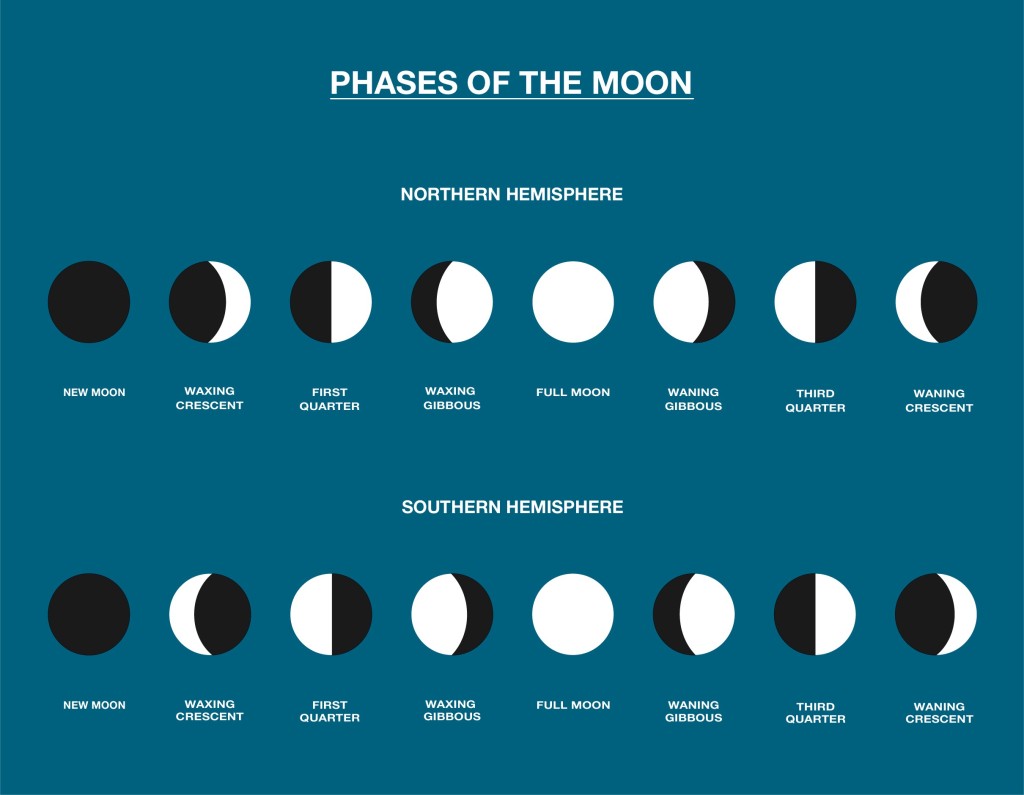The “Man in the Moon” is a story we have all heard since childhood: look into the sky and you’ll see a face in the moon, however I would get confused when I would look up and he would be missing. Where did this man go? Why isn’t he or the moon in the sky tonight? Well, the missing “man” is easily explained by examining the rotations and different phases of the moon in our night sky.
The moon travels orbits around the earth approximately 1 every 27 daysand rotates at the same rate. This means that we always are viewing the same side of the moon, hence why we can always see this “man” whenever the moon is bright in the sky. However, this doesn’t explain why we only see the moon in the sky sometimes and why the shape of the moon changes in the night sky.
While the moon rotates around the earth, the way we see the sunlight reflect off the moon changes. The moon consistently has half of it being lit by the sun, however, since we only see one side of the moon, we see how the sun’s light is hitting that particular side of the moon. As the moon rotates around the sun, we see can see our side being fully lit by the sun or not being lit at all. These different stages of the moon being lit are known as the phases of the moon. The phases begin with our side of the moon receiving no light, a new moon, and growing to have more light, waxing crescent and gibbous, to being fully lit, full moon, to having the light recede, waning gibbous and crescent, all the way back to no light.
The moon is always in our sky, so it is just a matter of our visibility of it. The “man in the moon” is in the sky to watch over us, even if we can’t see him.

You sound ready for the test! So how long is a Moon-day?
LikeLike
A Moon-day is the same length as the amount of time it takes the Moon to orbit around the Earth. It’s rotation and orbit are the same length.
LikeLike